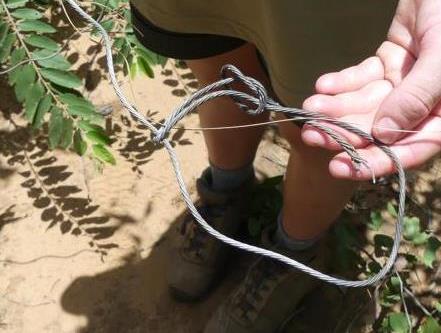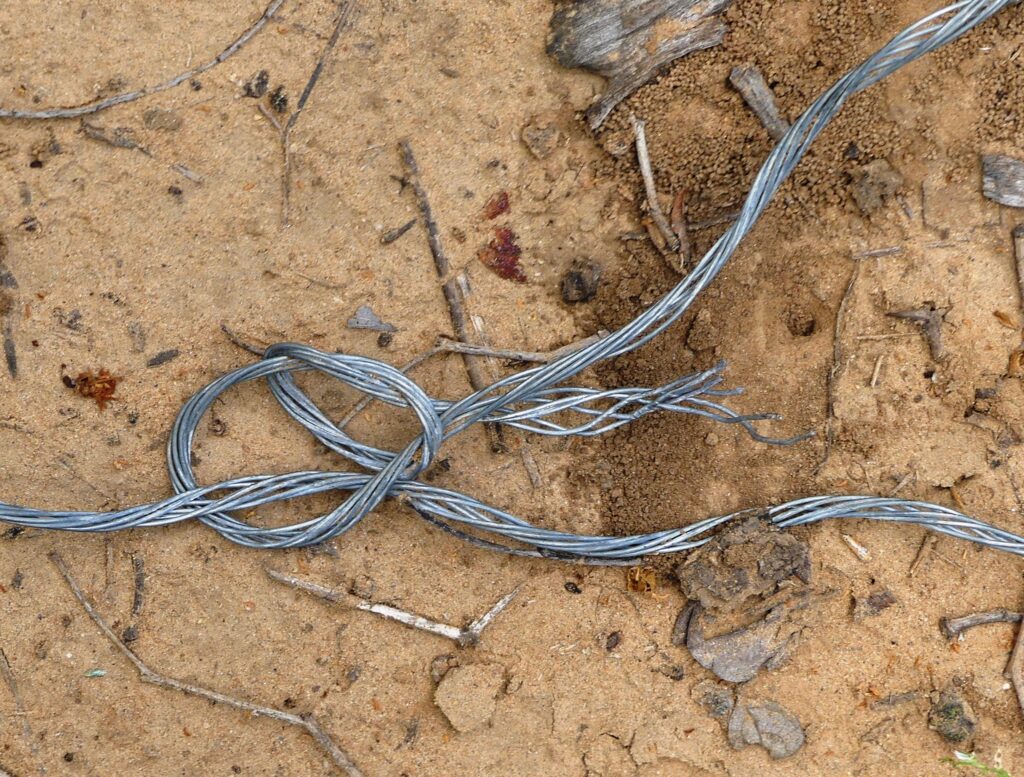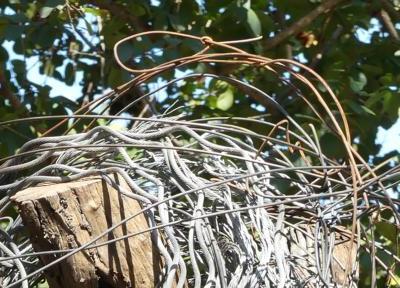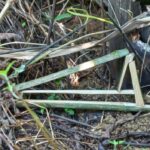Bushmeat snaring is a widespread hunting method in Sub-Saharan Africa. Public landscapes in this part of the world are often devoid of larger wild animals due to bushmeat hunting. This is so bad in some places that mammals – even those of the size of cane rats – are nearly extinct in the wild. Therefore, the local population has to go for arthropods, like insects, caterpillars, scorpions, a.s.o., or for birds, reptiles, and amphibians. Cane rats, as mentioned before, are in West Africa; for example, nowadays, they are so scarce that most of them sold for food are reared on farms.

Snaring and poaching in National Parks
Bigger mammals can be found nearly exclusively on private properties and in national parks. Game in National Parks is generally well protected, although the protection depends heavily on the specific security situation and degree of corruption. ‘Local Liberation armies’ often set up camp in forested areas – frequently National Parks – and the governments will try to fight them. This leads to indiscriminate poaching to supply these ‘Liberation armies’ themselves with food. The second problem – corruption – is fueled by the low wages of Wildlife Rangers and the existence of well-organized bushmeat mafias in many countries.

Snaring and poaching on private properties
Bushmeat snaring on Private properties can vary greatly. In this article, ‘Tribal concession areas’ are also considered private properties. In these areas, snaring is generally the most common. Although the areas belong to certain tribes, the poaching activities heavily depend on the leadership of these concessions. There are very positive examples, e.g., from Botswana, but also very negative ones from other countries.
Other forms of private property are various types of farms, which are generally well protected but experience lots of snaring inroads from the neighboring population. If such farms are bought by governmental authorities and handed over or sold to others, it is very common that within a short period, they are shot and snared out completely.

The best protection against bushmeat snaring holds private game farms with electro fences, K9 (Canine) units, and ‘Shoot-on-sight’ policies. But even they can’t wholly avoid snaring raids by their neighbors.
Snaring tactics
Snares are the preferred poaching tool, as the material is readily available, usually does not cost anything, is highly effective, and is very difficult to detect at de-snaring operations. And if an animal gets caught, it can typically be observed from a safe distance. If the poacher gets apprehended by wildlife protection personnel when observing the area, the crime can’t be directly blamed on him.
Overall, snares are easy to set up and difficult—and labor-intensive—to find. See also this source, which describes the problem in Kenya.
Before the snares are set up, the poachers will determine which game species they want to catch. Only two groups of animals are targeted: small—to medium-sized antelopes and mid- to large-sized ones.

The target group of small—to mid-sized animals is herbivores from Steenbuck to Impala. The target group of mid to large-sized animals is antelopes of all sizes, from wildebeest to eland. All other animals caught are by-catch, which will be discarded. We found such by-catches of giraffes, which were snared at their legs. We even saw a baby elephant left rotting, as his meat was not considered valuable.
Often, when a species with less-valuable meat gets caught, like Zebra, the poachers poison the carcass to kill as many vultures and hyenas as possible. These scavengers will alert the wildlife protection personnel that a carcass is lying in the area, and poachers want to avoid that in the future.

Snaring Hot spots
Typically, snares are set up in clustered patterns. These clustered patterns were studied in Zimbabwe depending on the seasons and published at this source. Attraction points for target animals are water- and food sources and the trails connecting them to their resting zones. Depending on the season, the water- and food sources will be located differently. At interconnections of such trails, the poachers block all entry- and exit points with snares. At such a ‘Hot spot,’ around 10 – 20 snares can be expected to have been set up.
The snare itself for bushmeat snaring
Snares mainly consist of spliced cable wire and, to a lesser degree, either barbed wire or plain thick wire. Spliced cables are preferred over wires, which are more flexible in forming the running eye. But wires have the advantage of a limitless supply from old fences. And – when pulled by the caught animal – it retains a kink on the wire behind the eye, strangulating the animal faster. However, about 90% of the snares we found on de-snaring ops were made from spliced cables.

The running eyes on snares we found were always approximately 8-10cm / 3 ¼ – 4’’ wide. Knots forming the eye were fastened depending on the snare material. And every poacher has his handwriting tied to the knot.
Running eyes in spliced wires
For spliced wires, either single or double knots, according to the below pictures, are used.




Running eyes in barbed and plain wires
Eyes in barbed wires are usually wrapped multiple times around the main wire. Whereas plain wire was always just bent once around the main wire. The difference in fastening the running eye in barbed- and plain wires is because of the varied wire thicknesses.

Setting up the snares
The best time for setting up snares is in the morning. After that, smells will have the chance to dissipate during the day, and then the snares are ready to catch in the evening.
But before setting snares, the poachers often rub their hands with sand or soil from the ground away from the snaring site. They avoid using strong-smelling forbs or soil from animal territory demarcation sites. They wear rubber boots and will not kneel on the soil of the snaring location. The human body smell is transmitted through skin and fabric but not through gum boots.
Often, snares are set on animal trails, which antelopes cannot sidestep or elude when they want to move in a particular direction. But sometimes, these constricted spots are too apparent for wildlife protection officers and poachers, so they build a web of snares around such ideal snaring locations.

Some more snare details
The diameter of the open loop is about one meter, and the loop is kept open with one or two fresh stripes of the inner bark of nearby trees. The dryness of these bark stripes can be estimated by the time of setting that snare.
| Target Species | Snare Height from Ground | Material Often Used |
| Small/Medium Antelope (Duiker, Impala, …) | 30 – 60 cm | Thin copper or steel wire |
| Large Game (Wildebeest, Zebra, …) | >1 m | Heavy-duty spliced cable |
The opposite end of the wire is always fastened to a sturdy lower part of a bush, and the length of the snare wire from the closed loop position to the fixation point is kept as short as possible. No swivels or other flexible elements are used. We never found a catch circle where the animal rotated around the fixation point until expiration. These bushmeat poaching snares depend on their sturdy wires and the relentless escaping efforts of the game, which will strangulate themselves.
Lessons learned from bushmeat snaring:
- Bushmeat snares come mostly in clustered patterns called Hot spots.
- Preferably, spliced wires are used as snare material.
- The whole snare design is straightforward but sturdy.
- Snares are set up in the morning and will be ready to catch in the evening.
.





